




Introduction to Muscle Fibre
We all perform day-to-day activities and sometimes we feel tired. Have you noticed when a kid or person of any age group runs or does some physical activity he feels tired? Also When we go to some adventurous place we feel tired, but why? Some people are strong and they do not feel tired soon on the other hand some people feel low. The answer to all questions is related to Muscles as some have strong muscles and they have a lot of energy to perform all the tasks in a day.
Our body is made up of bones and muscles! The human skeleton system has numerous different bones and muscles. Let’s understand muscle fibre in detail.
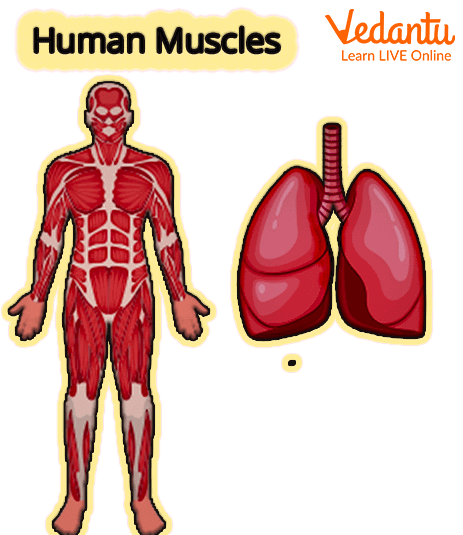
Human Muscles
What is Muscle Fibre?
Have you ever imagined what muscle fibre looks like? Let's have a look
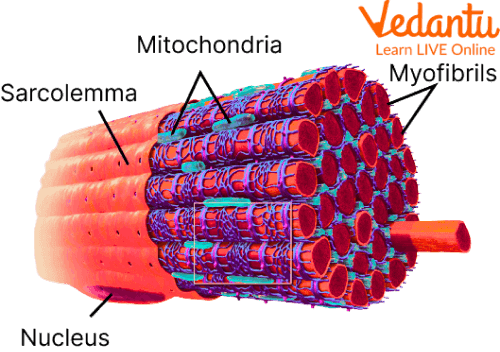
Muscle Fibre
Muscle fibres consist of a single muscle cell. They help to control the physical forces within the body. The Function of muscle fibres is to control the physical forces which are moving through the human body. A muscle fibre is composed of many long cylindrical-shaped fibres which are nearly 0.02 to 0.08 mm in diameter.
Types of Muscle Fibres
Now let's discuss the various types of skeletal muscle fibres.
There are mainly three types of muscle fibres namely:
1. Slow Oxidative (SO) Fibres:
These are the types of muscle fibres that contract slowly, they show slow contractions and use aerobic glucose and oxygen for producing ATP.
2. Fast Oxidative(FO) Fibres:
These are the type of muscle fibres that contract fastly and use aerobic respiration as well as anaerobic respiration. That is why they can get tired more quickly than the Slow oxidative fibres.
3. Fast Glycolytic (FG) Fibres:
These types of fibres have fast contractions and These fibres are slightly larger in diameter, they help in times of fatigue and help the body to be resistant towards fatigue.
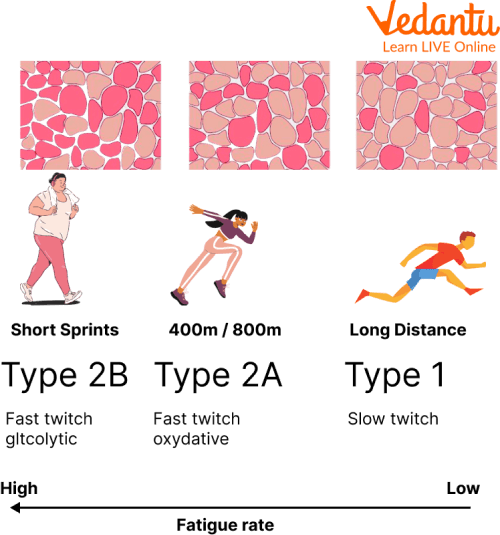
Different Types of Muscle Fibres
Structure of a Muscle Fibre
Each muscle fibre is a single cylindrical muscle cell. A single skeletal muscle can be made up of hundreds or even thousands of muscle fibres bundled together which are wrapped in a connective tissue covering.
Every muscle has a connective tissue sheath, which is called the epimysium.
Outside the epimysium, a connective tissue known as fascia is present which further separates the muscles.
Every bundle of muscle fibre known as a fasciculus has a layer of connective tissue known as the perimysium.
Location of a Muscle Fibre
Different types of muscle fibres are located in different parts of the human body.
The cardiac muscle fibres are located in the walls of the heart and are under involuntary control.
The smooth muscle fibres are located in organs like the intestines, pancreas, and liver and are also under involuntary control.
Skeletal muscle fibres are there in the muscles which are attached to the skeleton.
Diagram of a Muscle Fibre
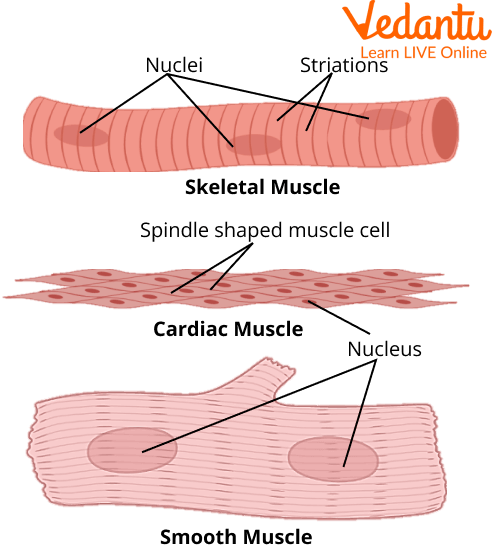
Diagram of a Muscle Fibre
Interesting Facts:
Do you know that it takes nearly the working of 17 muscles to act together to bring out the smile on our face?
The human body has nearly 600 muscles located in various parts of the body.
Muscles comprise nearly 40 percent of the human body weight.
Can you believe that one of the strongest muscles of the human body is located in our jaw.
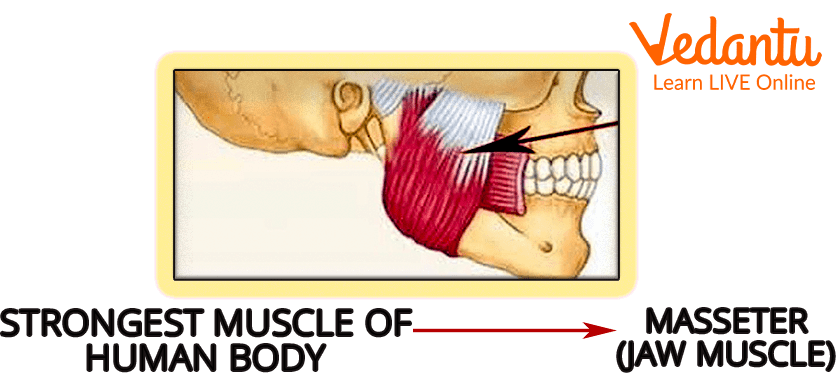
Jaw Muscle
The heart muscle is a muscle that works continuously in the human body.
The movement of our eyes takes place with the working of six muscle types.
The process of respiration and digestion in the human body is also aided by the muscles in the body.
Our muscles are built at the time when we sleep.
Summary
Thus we conclude that muscle fibres are very important . There are different types of muscle fibres located in the different parts of the human body and they play a vital role in the movement of the human body. Men have stronger muscles as compared to women. Different age groups have different stamina and as a person grows older the muscles get weak.
FAQs on Muscle Fibre
1. How do muscle fibres work?
Muscle contraction occurs in the human body when a muscle fibre or group of fibres is messaged or signalled by the brain through the nerves to activate and increase the movement within the muscle. This is also called muscle fibre activation. Our muscles are made up of a bundle of muscle fibres that contain thousands of smaller structures known as myofibrils, this is where the actual contraction occurs. The two proteins known as myosin and actin interact with one another by sliding which creates tension during muscle contraction. This is called the sliding filament theory.
2. Define a muscle.
Muscle fibres are elongated cells which have the feature of a muscle. A muscle is a tissue of the body which consists of long cells which can contract and produce motion. The contraction of the muscles produces movement in our body. Muscles provide physical strength to the human body.
3. How many types of muscle fibres are present in our body?
The following types of muscle fibres present in human body:
Slow Oxidative fibres
Fast Oxidative fibres
Fast Glycolytic fibres
Therefore, 3 types of muscle fibres are present in our body. Our different types of muscle fibres are located in different parts of our bodies.









